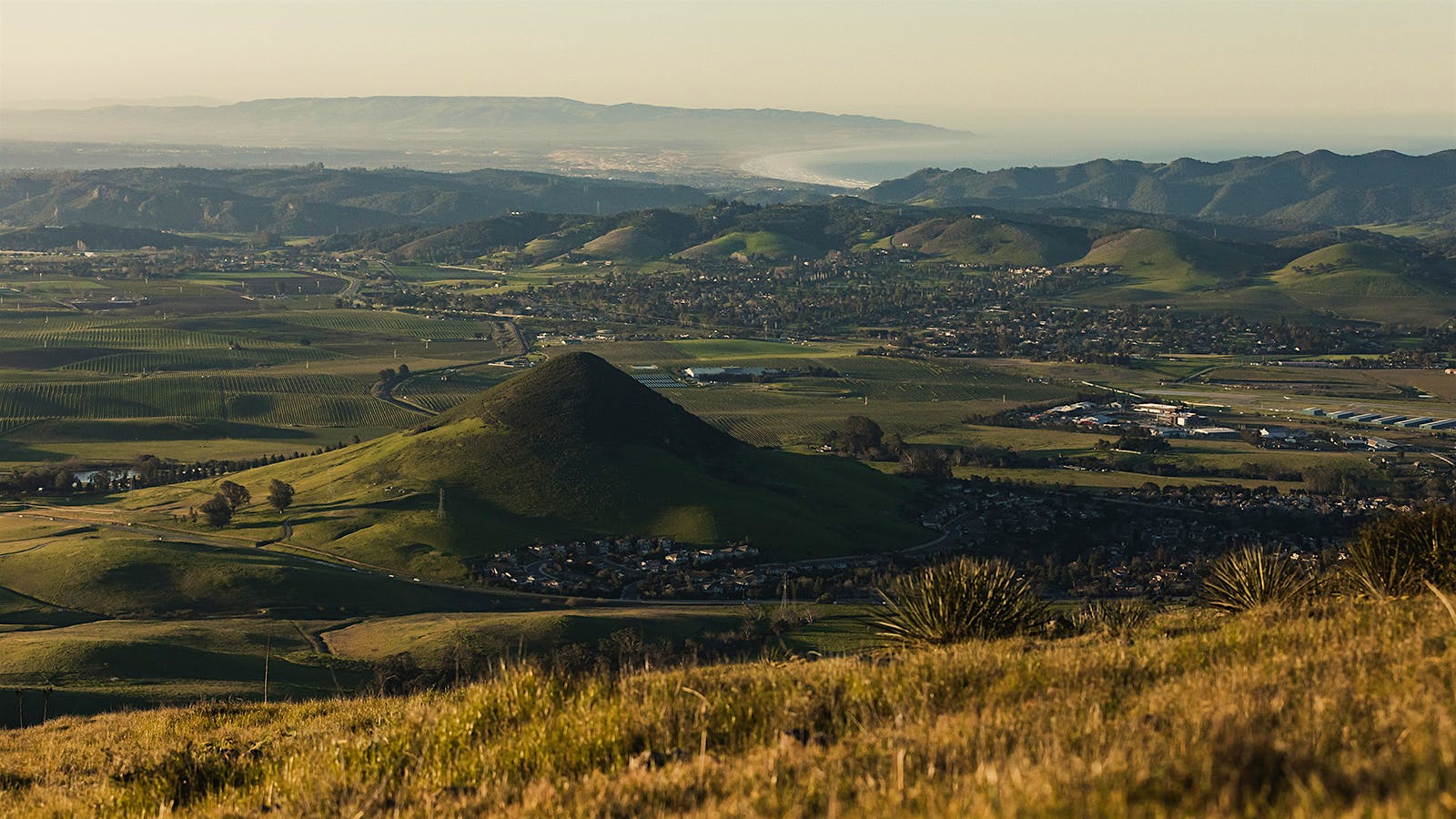Products You May Like
America’s newest wine appellation is all about coastal weather. When the backers of the San Luis Obispo Coast American Viticulture Area (AVA) assembled a petition for the U.S. Alcohol and Tobacco Tax and Trade Bureau (TTB), they sourced data from 34 climate stations to help determine the now-approved appellation’s borders. The result is the most coastal wine region in the country, with 97 percent of vines planted within 6 miles of the Pacific, which means cool temperatures, strong winds and fog.
The TTB officially approved the appellation earlier this month. Wines can start using either San Luis Obispo Coast or SLO Coast on their labels beginning in April. Spanning a 60-mile stretch of California’s Central Coast and bordering Paso Robles to the east and Santa Maria to the south, the SLO Coast AVA includes 78 vineyards and 3,942 acres of vines. The appellation also includes the Edna Valley and Arroyo Grande Valley AVAs. The new AVA currently includes 32 wineries, most of which are smaller producers.
The appellation petitioners pushed for the larger AVA because the existing Edna and Arroyo Grande AVAs omit some of the area’s vineyards. “Our existing AVAs are so small that it’s too hard to get recognition on a national level,” said Aaron Jackson, lead author of the AVA application and owner of both Aequorea and Aaron Wines. “We get to have the benefit on the label now that this is an area that is truly coastal.”
The local growers hope that the SLO Coast designation on bottles will help elevate consumer awareness of this emerging region. “We wanted to distinguish ourselves from SLO County and warmer areas like Paso Robles,” said Stephen Dooly, president of the SLO Wine Collective, a local winery marketing organization. “The word “coast” helps people understand that it’s a cooler vineyard.”
Supporters of the new AVA said that the region’s unique geography of coastal benchlands and hillsides, featuring marine soils of shale and sand and cooler temperatures, merited a separate designation from surrounding wine regions.
“[More than] 90 percent of our vineyards are under 6 miles from the coast. We have the most coastal acreage of any AVA in the state,” said Jackson. Chardonnay and Pinot Noir are the dominant varieties in the area. Some vintners are growing aromatic varieties such as Albariño and Grüner Veltliner as well. The area’s cool temperatures and high diurnal shifts are similar to that of the Santa Maria Valley AVA, which the SLO Coast borders on its southern end.
Weather station research found that the SLO Coast AVA warms with elevation, especially in areas above 1,500 feet. Vineyards closer to the eastern edge of the AVA, farther from the water, get relatively warmer. Producers such as Talley Vineyards are able to ripen Syrah and Grenache there.
Visitors to the region typically visit the adjacent Paso Robles wine country, known for Rhône-style reds and Zinfandel. Paso Robles experiences far higher average high temperatures than San Luis Obispo due to the Santa Lucia Mountain range, which separates its vineyards from the coast. Many producers in San Luis Obispo, such as Aaron and Stephen Ross Wines, produce both warm climate wines from Paso Robles and cool climate wines from SLO.
The new AVA is in many ways reminiscent of the Sonoma Coast AVA, which also has multiple sub-AVAs such as the Petaluma Gap and Russian River Valley within its borders. But the Sonoma Coast AVA has attracted criticism for including many areas that lack a truly coastal terroir. The SLO Coast boundaries avoid that.
![SLO Coast]](https://mshanken.imgix.net/wso/bolt/2022-03/ns_slomap032422_1600.jpg?auto=compress,format,&sharp=5&vib=20&q=70&w=320 320w,https://mshanken.imgix.net/wso/bolt/2022-03/ns_slomap032422_1600.jpg?auto=compress,format,&sharp=5&vib=20&q=70&w=320 640w,https://mshanken.imgix.net/wso/bolt/2022-03/ns_slomap032422_1600.jpg?auto=compress,format,&sharp=5&vib=20&q=70&w=384 768w,https://mshanken.imgix.net/wso/bolt/2022-03/ns_slomap032422_1600.jpg?auto=compress,format,&sharp=5&vib=20&q=70&w=828 828w)
Stay on top of important wine stories with Wine Spectator’s free Breaking News Alerts.
